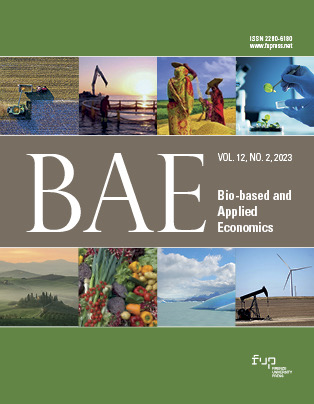Does the presence of inner areas matter for the registration of new Geographical Indications? Evidence from Italy
Published 2023-05-15
Keywords
- rural areas,
- geographical indications,
- inner areas,
- rural development
How to Cite
Copyright (c) 2023 Francesco Fasano, Francesco Pagliacci

This work is licensed under a Creative Commons Attribution 4.0 International License.
Abstract
Remote areas have been progressively obtained greater attention. Since 2014, the Italian National Strategy for Inner Areas has tackled remote areas with the aim of promoting local development. A tool to foster economic development in these areas is valorisation of those high-quality agri-food products that are characterised by unique features, through the use of geographical indications. This study addresses this topic, by considering the geographical indications registered in Italy since 2014. The study considers municipality-level (LAU2) data, taking the number of geographical indications that each municipality is eligible to produce as a dependent variable. Hurdle models are used to assess the effect of inner areas and other covariates (i.e., agriculture and food industry features, socio-economic characteristics, regional settings). The results suggest that geographical indications still represent a sort of untapped resource across inner areas, even when controlling for regional settings across Italy. Thus, a more effective policy intervention is requested.






